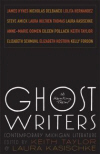Ghost Writers: Us Haunting Them
When we think about North American geography and ghost stories, the Midwest United States feels somewhat lacking. Maybe that’s because we think of the region historically as merely a way toward somewhere else, and thus any good haunting it might have acquired also feels ephemeral. Ghosts also require a decent amount of tragedy. The East has its colonies and its Puritanical roots based in part on superstitions. The South, of course, has its own tragic pillar of slavery and its gothic aftermath. Even the West has plenty of dead and displaced Native Americans. So the Midwest would seem to need its own man-made disaster to birth some spirits.
When we think about North American geography and ghost stories, the Midwest United States feels somewhat lacking. Maybe that’s because we think of the region historically as merely a way toward somewhere else, and thus any good haunting it might have acquired also feels ephemeral. Ghosts also require a decent amount of tragedy. The East has its colonies and its Puritanical roots based in part on superstitions. The South, of course, has its own tragic pillar of slavery and its gothic aftermath. Even the West has plenty of dead and displaced Native Americans. So the Midwest would seem to need its own man-made disaster to birth some spirits.
Enter the great recession and enter the Made in Michigan Writers Series, and the result is Ghost Writers: Us Haunting Them, an anthology of paranormal tales by native Michigan or Michigan-based writers. Call it “Post-Industrial Gothic,” if you will, because none of these tales would quite work the same way if the economy, led by the auto industry, wasn’t suffering along with the remnant population of the state.
Even the “required” haunted lighthouse tale, “Bones on Bois Blanc” by Laura Hulthen Thomas, wouldn’t quite hit readers the same way if the haunted couple wasn’t losing their house and their car for lack of employment. The pair takes one last family vacation “up north” (to bury some remains!) before the final curtain drops on their once-comfortable life together. Why wouldn’t a phantom of some sort attach itself to such bad circumstance?
The most literal example of industrial-past-meets-present is “Thin Air” by Elizabeth Kostova (of The Historian fame) in which a laid-off father turned Mr. Mom takes his kids to historical Greenfield Village for the day. They are soon picked up by a Model T driven by a ghost who’s also depressed about leaving the work-a-day world behind. Here, then, unemployment is equated with the limbo of the hereafter, which makes perfect sense seeing as both the idle and the dead don’t quite know how to move forward.
As expected, Detroit is hardly spared commentary. The city itself becomes a ghost town in Keith Taylor’s “The Man at the Edge” when a rural high school history teacher must escort a handful of his students down to the city for a career fair. The teacher takes some time for himself at the Detroit Institute of Arts, only to find that the museum is also vacant, save for an angry spirit from within an old Dutch painting. Taylor implies that this is perhaps some ancestor angry at what his lineage has wrought (or let rot). But the ghost isn’t even as frightening to the teacher as simply getting out of the city, which includes a run-in with a pan-handler as mysterious to him as any specter. He returns to his woods compromised and haunted by what he’s seen.
The rest of the Mitten (as Michigan is called) also suffers poltergeists throughout the collection. Yoopers (those who live in the Upper Penninsula—the U.P.) succumb to a particularly cruel blue color apparition in Anne-Marie Ooman’s “Bitchathane,” but in true Yooper form, the narrator recounts the tragedy matter-of-factly. Lansing (the state’s capitol) suffers from the dangers of urban sprawl in the form of carjacking victims in James Hynes’s “Backseat Driver” until a revenging ghost uses a divorcee to take back the roads. Even a coastal tourist town gets a dose of Satanism (what else?) concerning its founding and abuse of the indigenous people in Eileen Pollack’s “The Devil in Cross Village.”
If the anthology has a fault, it’s that the actual chills are minimal. These aren’t tales of “horror” so much as vignettes of a deeper haunting done to a state finding itself removed from progress. We’re left wondering what we’re watching unfold in every rust-belt area where jobs and people slip through time, much like the ghost girls in Laura Kasoschke’s simple yet affecting “Ghost Anecdote”: “I would not believe you if you’d told me that one day, those ghost girls would seem more real to me than the girl at the picnic table, the one who was me,” the narrator admits.
Michigan is the same way: disbelieving that it once worked and prospered, disbelieving each day that it was once someone else, haunted.





